Greg O’s Garage: Weighing in on the 1906 American Elimination Trial and Vanderbilt Cup Race
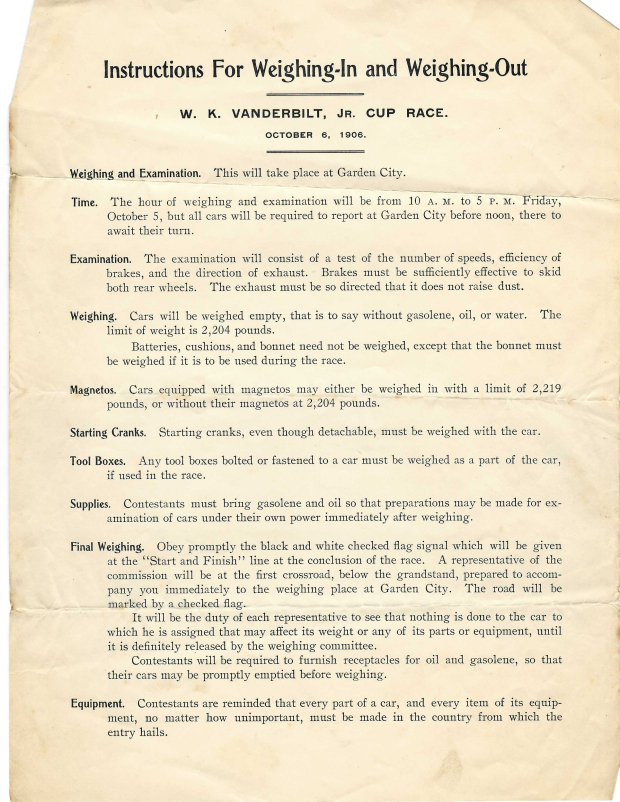
The official instructions for weighing-in and weighing-out of the 1906 American Elimination Trials and Vanderbilt Cup Race. But the weigh-ins and outs were not as cut-and-dry as what was on the sheets handed out to the contestants.
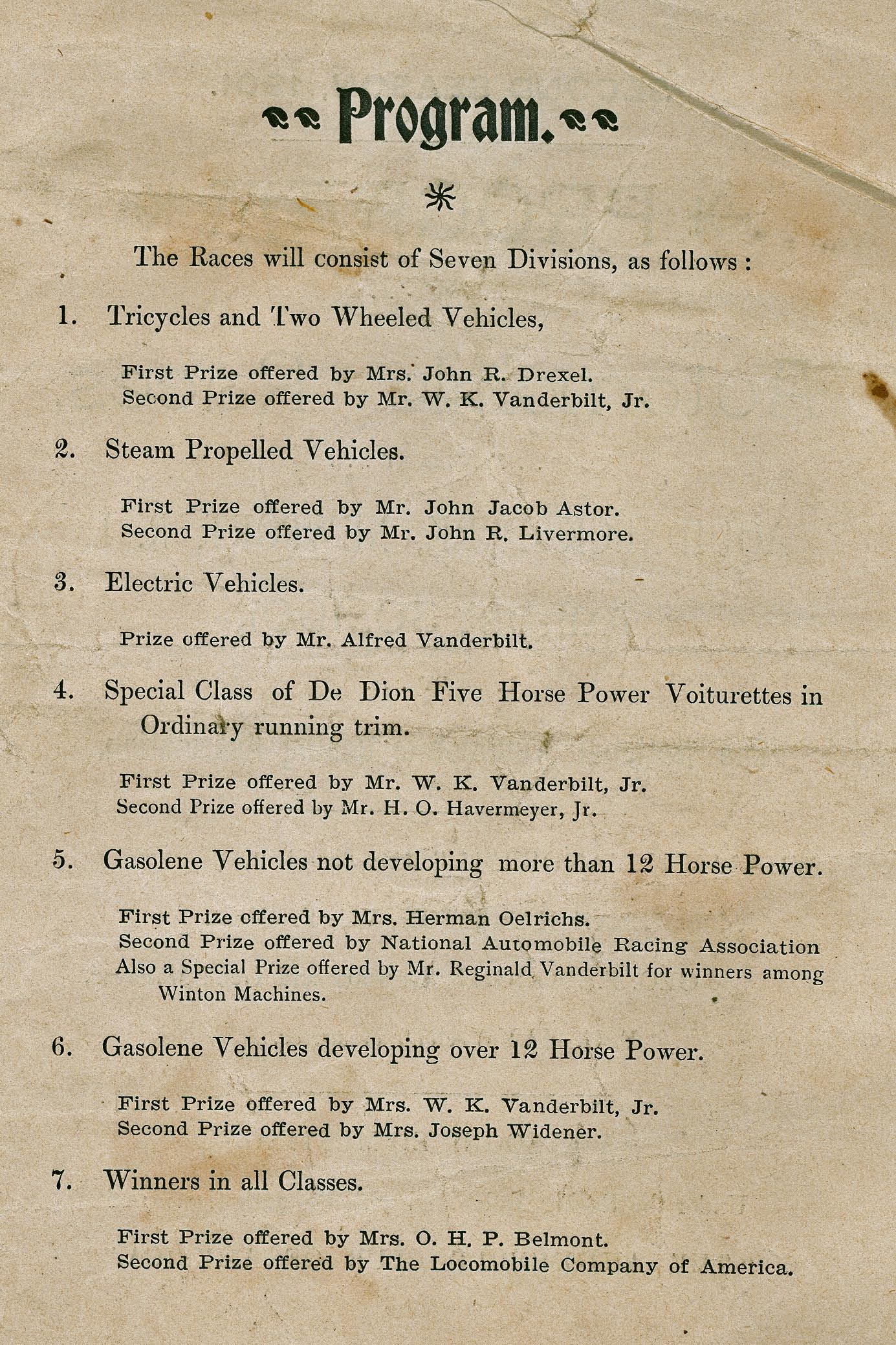
The early days of racing were like the Wild West when it came to rules and regulations. From confusing classes to race regulations, everything was new without any precedence before it. Racers and officials didn't have an easy time of it and certain early regulations didn't make sense at all, at least to a modern race fan.
Take for instance auto classifications of many of the races of the day. Very early races were simple. With many different types of propulsion power in early autos, the races in Newport, RI in 1901 were as basic as can be. Simply, what was your car powered by? Seen here are the 7 classes of autos in those races, with only gasoline powered vehicles split into 2 different horsepower figures above and below 12 horsepower.
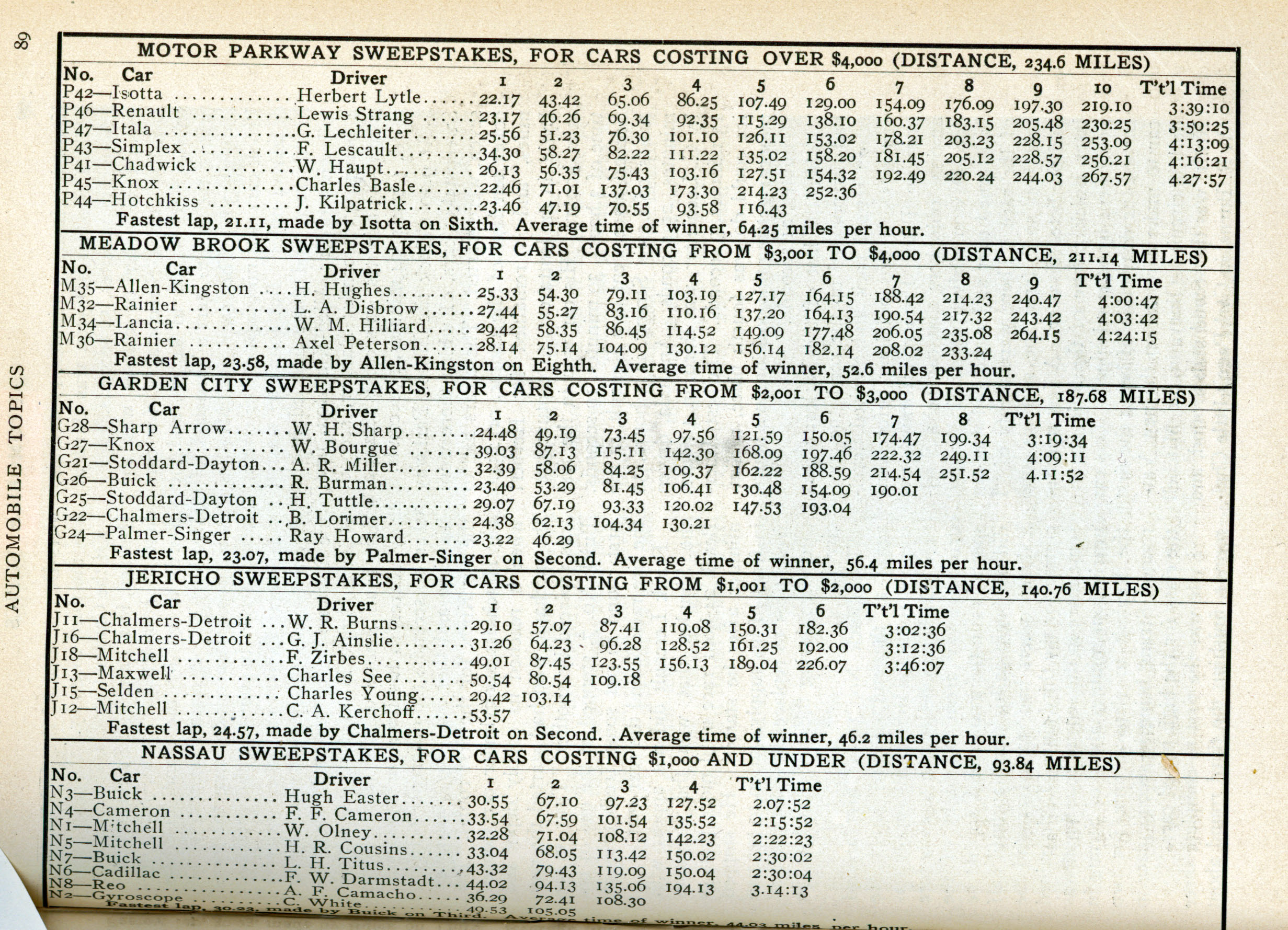
Unlike today, where engine sizes, weights and horsepower determine what type of car races another, in the early 1900's, sometimes even a car's retail price determined its classification.
Excuse me? Retail price? Yes.
The later Vanderbilt Elimination trials, like these classes in the 1908 American Eliminations race, classified American cars by their retail prices. Of all the things to judge by, retail price of car would seem to be at the bottom of the list. In modern day terms and vehicle nationality aside, a Ford or Chevy could not race a Ferrari simply because they are far apart in retail price despite them being similar in track performance specifications.
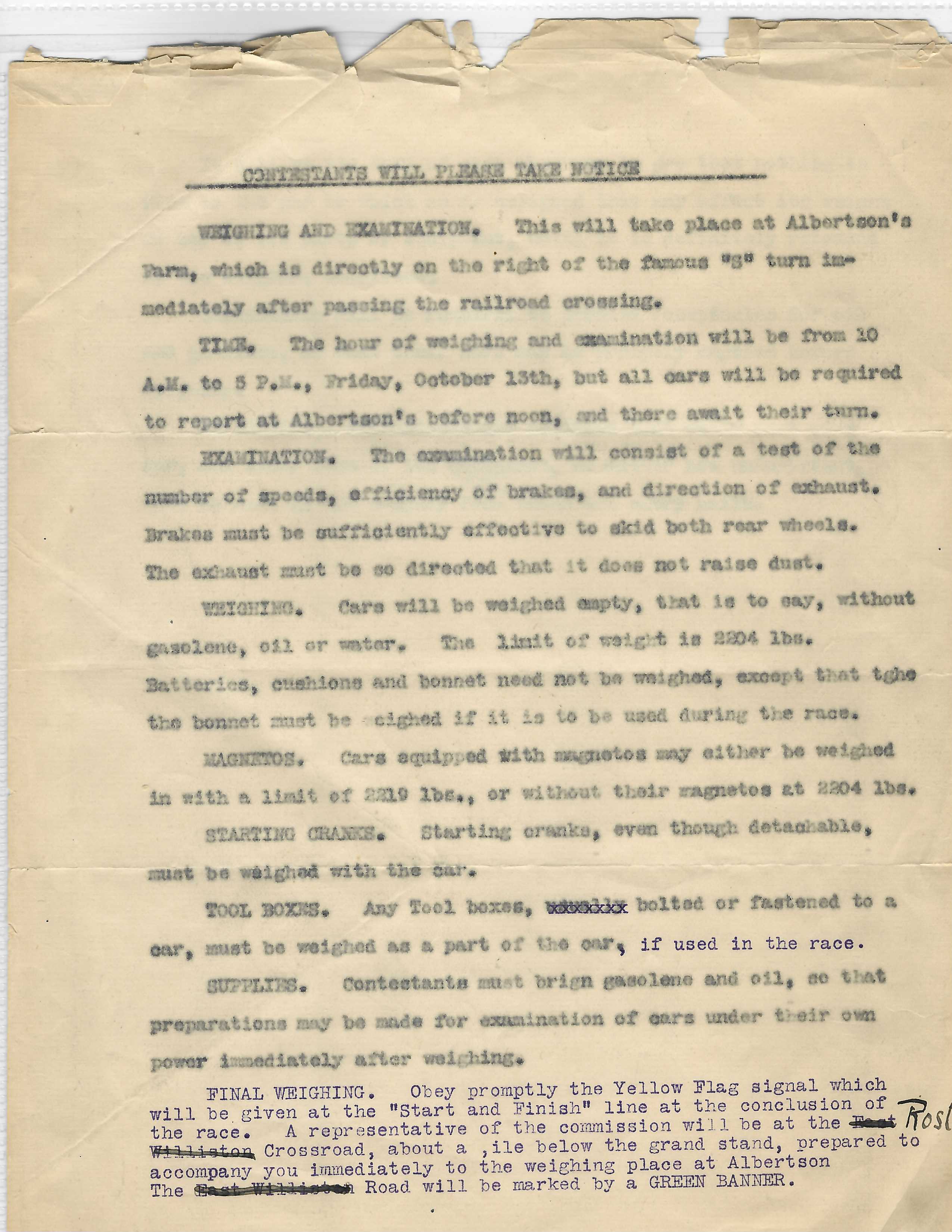
In 1905/06, regulations that make a bit more sense than price were being imposed as well. Vehicle specs were logically starting to come into play such as the weight of a vehicle.
An early, typed draft of the weight regulations before final printing revisions.
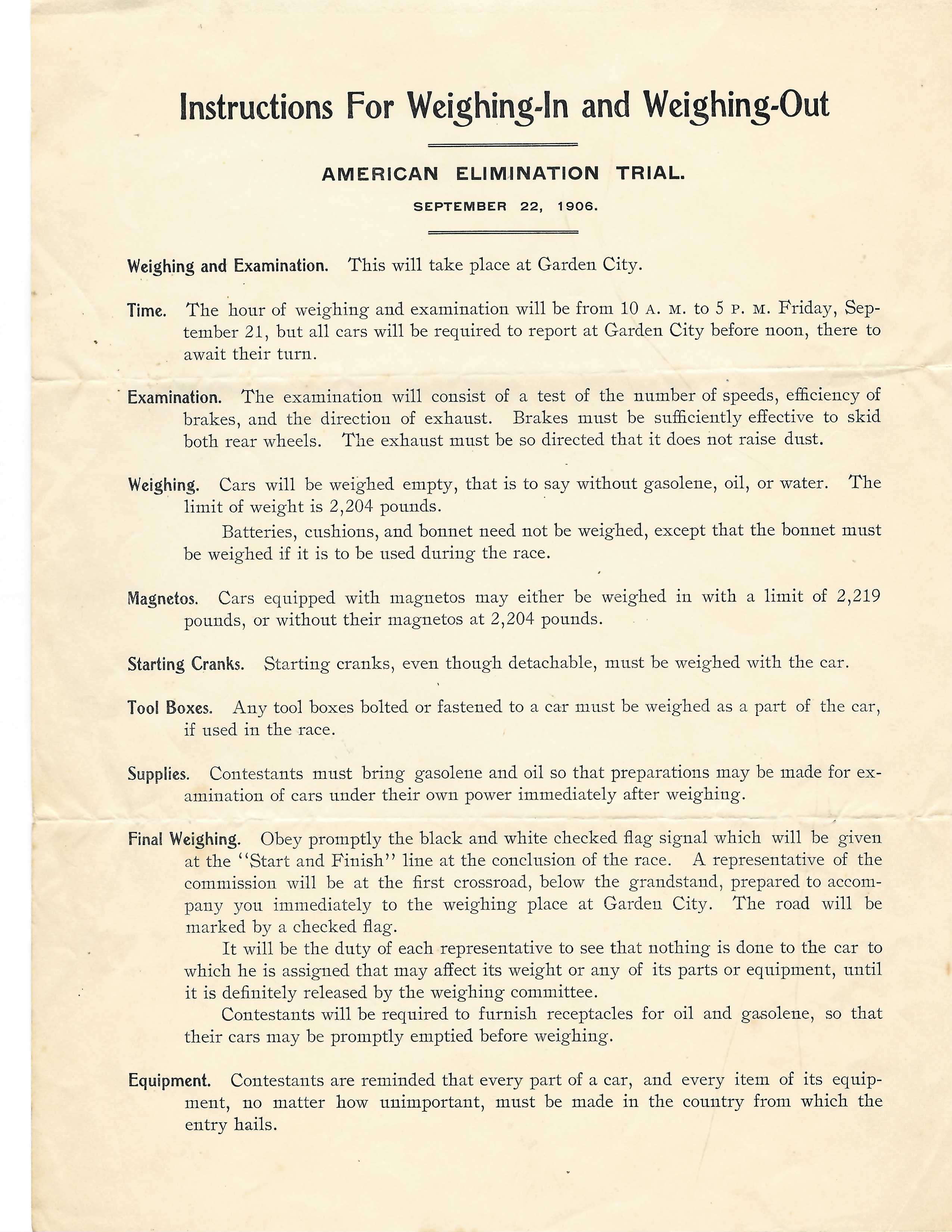
One of those revisions that we see on the final copy was the use of the checkered flag. The previous draft stated, " Obey promptly the Yellow flag signal which will be given at the 'Start and Finish' line at the conclusion of the race."
By the time this final draft was published for the Elimination races, the race commission decided on the use of a checkered flag to signal the winner of the race. While never historically documented in publication, the first known photo of a checkered flag in any auto race was for the 1906 Vanderbilt Cup Races.
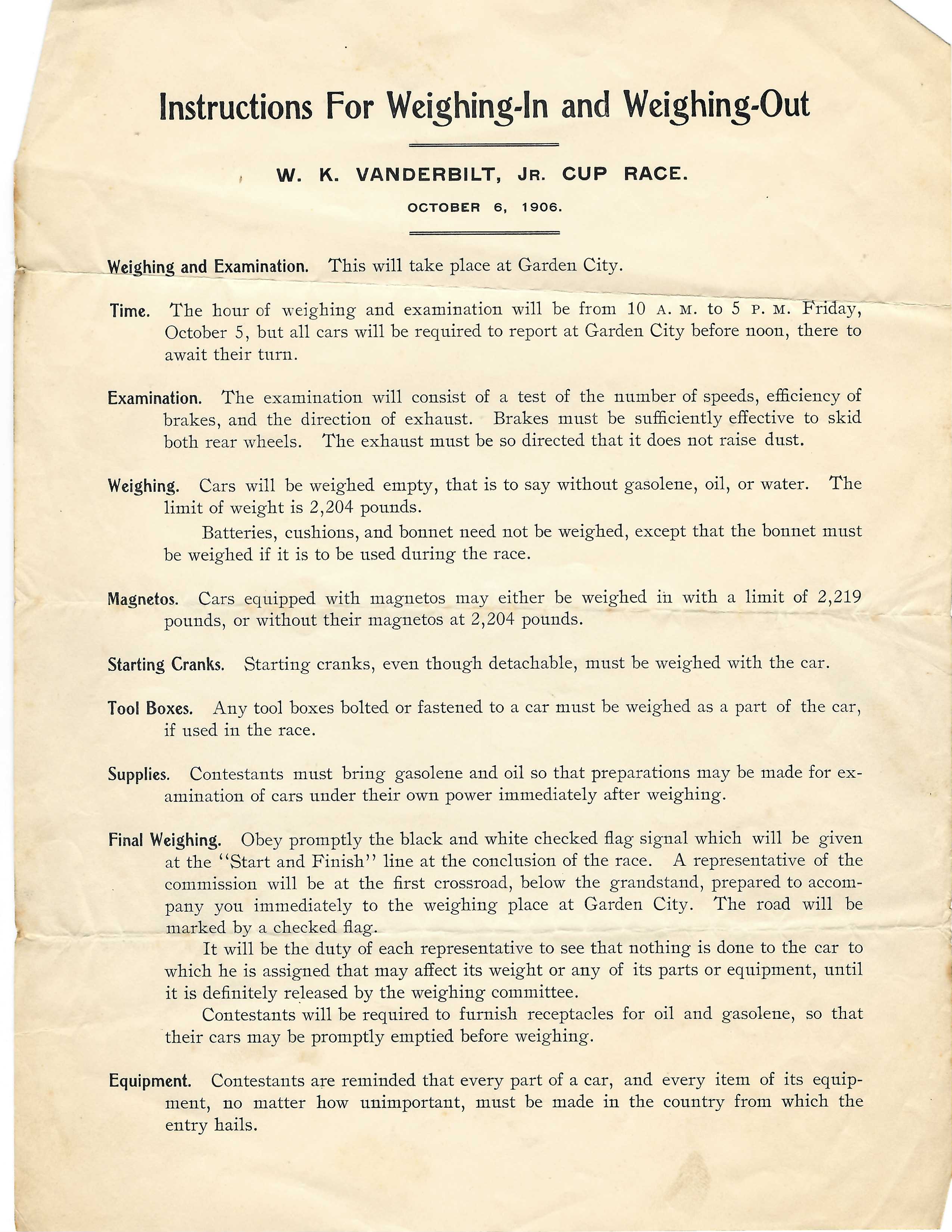
Another revision was the location of the weigh-in. In the 1st draft, the location was to "...take place at Albertson's farm, which is directly on the right of the famous "S" turn immediately after passing the railroad crossing."
The final draft calling the location as simply, 'Garden City'.
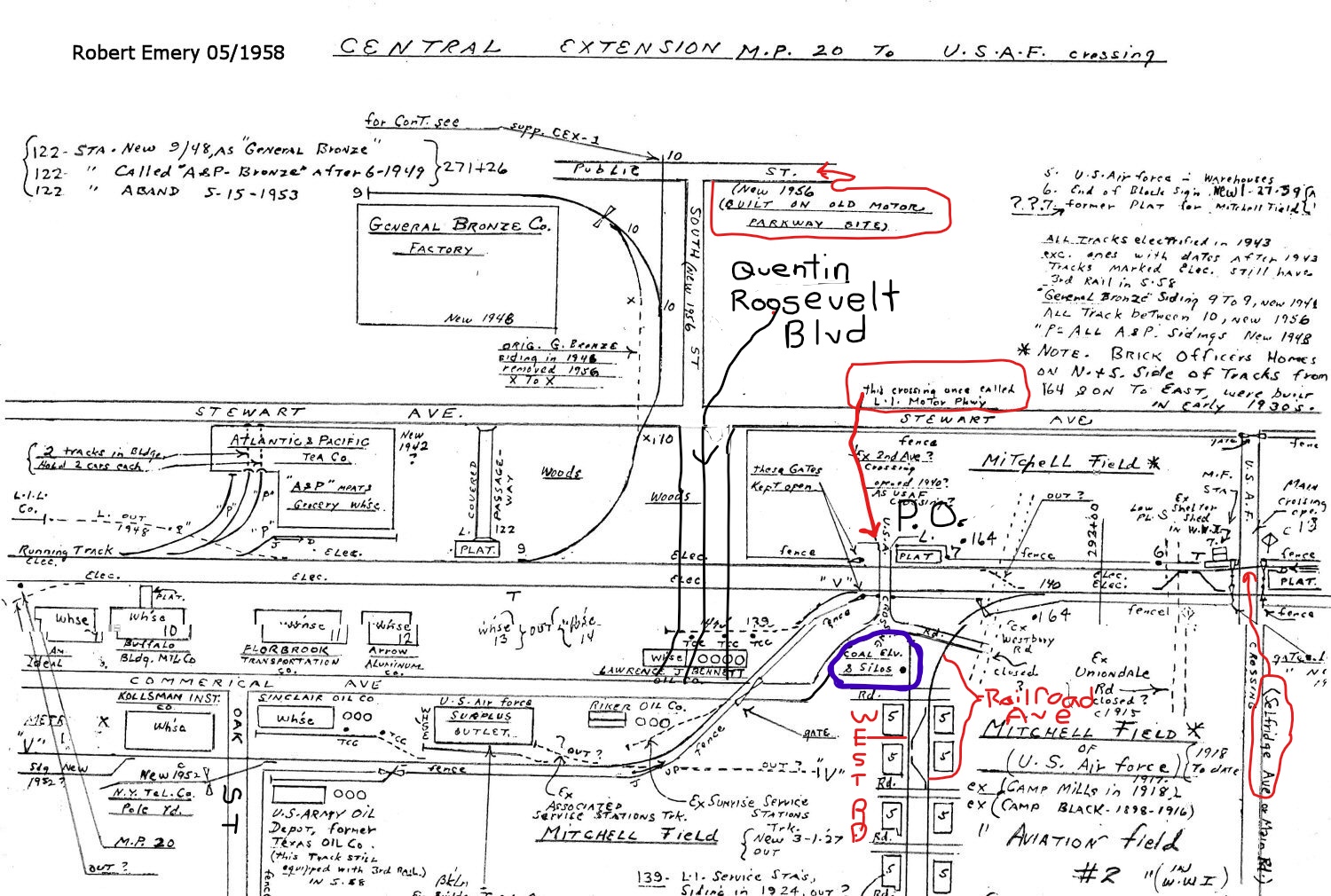
The actual location for the weigh-in was the Garden City Coal and Wood Yard with its location realized by Brian McCarthy on this map from 5 years ago.
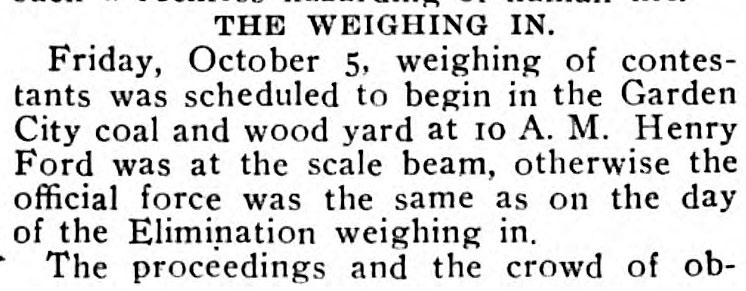
One of the 4 judges for the weigh-in was none other than Henry Ford as stated in the article from the Cycle and Automobile Trade Journal, November 1906.
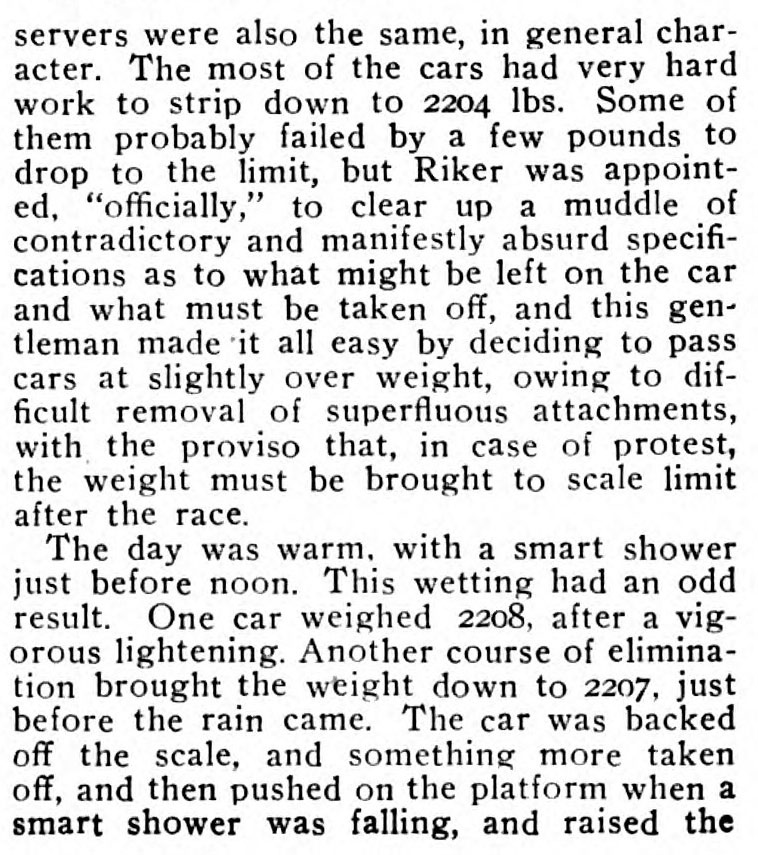
Despite the wording of the published weigh-in sheets, there was still a bit of frustration and confusion as to weights of the autos.
Commissioner A.L. Riker stepped in to clear up any weight confusion.
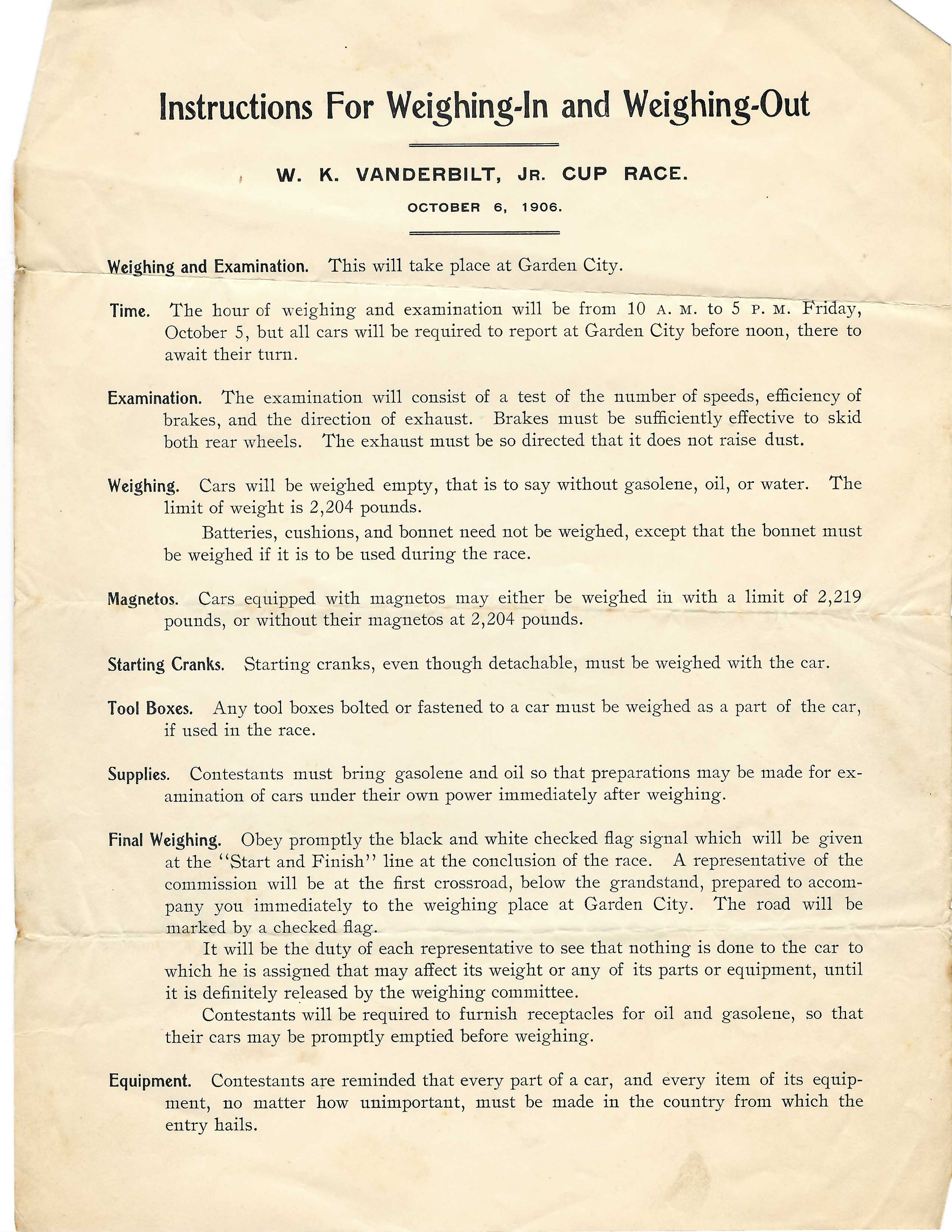
A final, interesting note of the regulations are Magneto and starting crank limits.
Magnetos for the ignition can be heavy, and cars that used them were allowed an extra 15 pounds to accommodate them. And "...even though detachable, [starting cranks] must be weighed with the car."

Comments
Hi Greg - Thanks for the mention of me with the Robert Emery LIRR map above, but I’m pretty sure I was wrong about the location of the Garden City Coal & Wood Yard. Below is 3 screenshots - my comment about where this Coal Yard actually was, another marked Robert Emery Map ( his sketches are excellent ), and a 1914 map of Uniondale & Garden City. There was Meadowbrook Club, but no military operations yet.